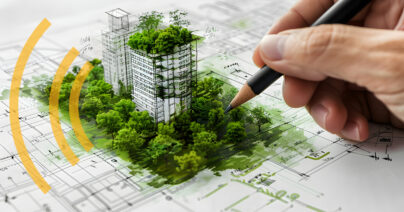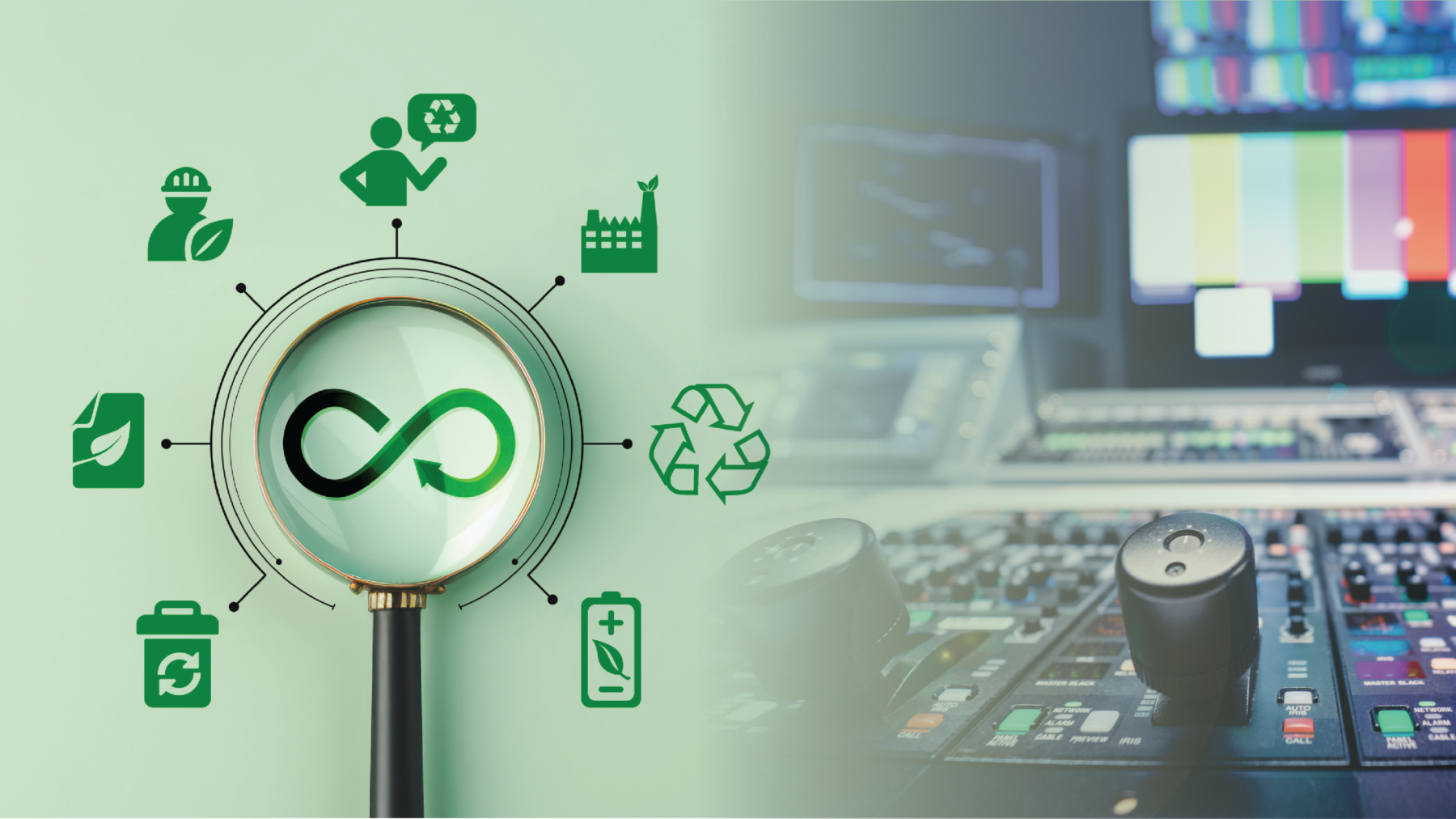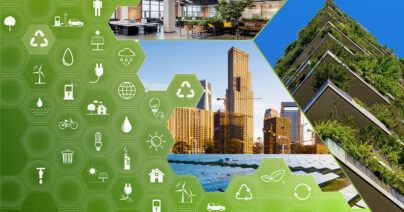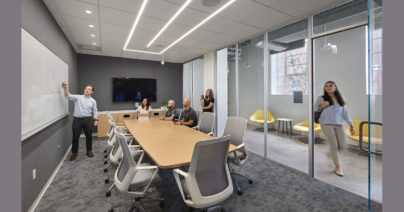The concept of sustainability in the built environment has been rapidly evolving in recent years, with the adoption of various practices becoming more mainstream. The messaging of “going green” and conservation has also become a powerful marketing tool for businesses looking to increase brand awareness and align themselves with the global push towards Environmental, Social, and Governance (ESG) accountability, driven in part by the UN’s 2030 Sustainability Development Goals.
Due to rapidly evolving technological advancements and the increased reliance on connectivity, the Pro AV industry is positioned to promote sustainability in the development and usage of AV equipment. While creating environmentally friendly products is the first step in a sustainable industry, it is up to designers and end-users to use the available technology to decrease waste and reduce greenhouse gas emissions. In this article, we will explore what manufacturers, consultants, and end users can do to maximize their sustainability impact.
MANUFACTURERS
Some manufacturers are changing their practices and products to meet or exceed the social and governmental pressure for ESG sustainability. A product’s Life Cycle Assessment (LCA) is a cradle-to-grave analysis of the environmental impacts of a product. A comprehensive LCA will include data on raw material extraction, manufacturing emissions, transportation, energy efficiency, and end-of-life disposal or recycling. Many manufacturers are now reporting their own approaches for improving the sustainability of their products. When selecting products for your project, it is important to consider these five divisions of an LCA to accurately measure your own organization’s total environmental impact.
- Using recycled materials (as opposed to recyclable) is the best way to reduce environmental impact. Manufacturing using recyclable materials does not guarantee that those products will be recycled. When recycled materials cannot be used, using conflict-free minerals, or better yet, locally sourced material is preferred.
- The energy requirement to produce most AV equipment is a massive outlay. The industry is adapting by leveraging sustainable energy sources such as solar, wind, hydro, and geothermal which can reduce manufacturers’ Scope 1 and 2 emissions drastically.
- There is a push towards smaller, recycled packaging, with less toxic ink, and a reduced reliance on plastics (a fossil fuel). Recycled cardboard/paper packaging can be just as robust, and decreasing packaging size will allow more products to fit in shipping containers and delivery vehicles. You may also find fewer accessories included with your purchase. For example, you may have to specify your mounting condition or other details so that redundant material does not end up in your local landfill.
- Product efficiency continues to improve as technology advances, and that efficiency pays dividends over the total life cycle when considering energy cost and loss of productivity due to downtime and maintenance. The development of laser projectors, high-efficiency audio amplifiers/speakers, and reusable and modular products, all contribute to a lower carbon footprint.
- Designing products that have a long lifespan and are easily maintained/repaired is the first step in reducing the device’s end-of-life impact. Some manufacturers are recovering old products for refurbishing, recycling, or for proper disposal.
CONSULTANTS
AV consultants can play a major role in increasing sustainable practices within our industry. Not only will an experienced consultant help in specifying equipment from reliable, energy-efficient, and eco-conscious manufacturers, but they can leverage the latest technologies to decrease the complexity, minimize overall cost, and reduce the total number of devices needed in an AV system.
One of the newest and most exciting progressions in Pro AV is the development of AV over IP (AVoIP) technology. AVoIP systems use standard network devices and protocols to deliver audio and video to displays, speakers, and conferencing/streaming services. This new technology can influence the sustainability of a project as follows:
Reduce Total Number of Devices
- AVoIP technology can eliminate or reduce the need for converters, matrix switchers, and other devices. Routing and control are often software-based.
Decrease Cabling/Infrastructure Cost
- AVoIP technology uses standard category cable to deliver audio and video to endpoints. Often, a single-category cable can replace the need for separate video, audio, control, and network cables.
Increase Energy Efficiency
- AVoIP devices are usually designed with energy efficiency in mind. Many devices can be powered through the same cable that delivers the AV signal using Power Over Ethernet (PoE) technology. This can further reduce cabling and infrastructure cost, while simultaneously reducing total energy consumption of the AV system, as well as bulky and unreliable DC power supplies.
Remote Monitoring and Control
- Because the entire AV system is networked, devices can be monitored and controlled from a centralized location. This simplifies software updates, reduces downtime, increases productivity, and because PoE devices are on the network, administrators can schedule or manually control power from a remote location.
Scalability
- Scalability problems are solved by using standardized networking infrastructure and cabling. Adding a device is no longer limited by expensive matrix switchers I/O capabilities, so when designing a system, you only pay for what you need, when you need it, not overdesigning to future-proof the system.
Not only will a qualified consultant ensure your AV backbone is as sustainable as possible, but they can help to greatly reduce the total greenhouse gas emissions of an organization by prioritizing the energy use and heat generation of key components. Flat panel displays, projectors, and LED walls have all become crucial communication tools in our daily lives – from entertainment to conferencing, learning, and digital signage – but the energy use varies even within each type of display. A well-designed system will not only use the correct type, size, and brightness for the application, but there may also be options for automating power and brightness using scheduling systems, occupancy sensors, and ambient light sensors.
An AV system can also fit into a Smart Building plan if your organization is looking to further enhance productivity and sustainability.
USERS
If the project is a renovation, or if you already have existing AV equipment, the biggest impact an organization can have is how they handle their old equipment. In 2019 alone, it was estimated that over 50 million tons of e-waste were generated, and less than 20% of electronics are recycled worldwide. The older your AV system is, the more likely it is to contain harmful chemicals like lead and mercury, which, when not disposed of properly, will leak into soil and water, contaminating ecosystems and posing health risks. Here are some ways an organization can minimize the impact of their e-waste.
- Reuse or repurpose old equipment that may still serve a use in your organization.
- Look to your local community to see if they need any of your old equipment.
- Reach out to programs like SAVe a Second Life, who will help find other organizations to donate equipment that are beyond your network.
- Return old equipment to manufacturers for refurbishing, recycling, or proper disposal.
- If the above options are not possible, the EPA recommends using Certified Electronics Recyclers (CER).
A CER has demonstrated to an independent third-party auditor that they meet the specific standards to manage electronic waste safely and ethically. Currently, the two standards are R2 and e-Stewards. Both websites offer ways for individuals and enterprises to safely dispose of old gear, including a search feature for finding local CER’s, many of which will help develop a custom plan for your needs.
After the AV system has been specified, designed, installed, and commissioned, users retain the ability to manage the overall impact.
Minimize use of single-use batteries.
- Most wireless microphone manufacturers offer rechargeable battery options. Not only do these outperform single-use batteries, but they can greatly reduce service costs if you store the transmitters in an intelligent recharging dock, which can monitor the charging and status of the battery, and the system will often pay for itself within the first year of service.
- When single-use batteries are necessary, utilize a battery recycling service like call2recycle (https://www.call2recycle.org/) to recycle batteries either locally, or by mail.
Consider your LED wall and digital signage content.
- LED walls in commercial spaces can be an impressive way to display events, scheduling, corporate branding, advertising, and other media (and reduce the need for printed signage), but the actual color and brightness of the content can have a great impact on energy consumption. Black content consumes about 30% of the energy of white content, so consider the colors in your signage.
Stay on top of scheduling and other automating services your AV system may be utilizing.
- If your organization is already using a scheduling system to automate the power status of your AV system, remember to stay up to date on schedule changes, holiday closures, or other times you may be able to cut down on energy consumption.
In a world where our choices carry environmental consequences, the Pro AV industry is catching up on a journey towards sustainability. By choosing environmentally friendly products, streamlining AV systems, and properly managing equipment, we can collectively reduce our total carbon footprint, contributing to an equitable and fair future for all.
 Articles
Articles


